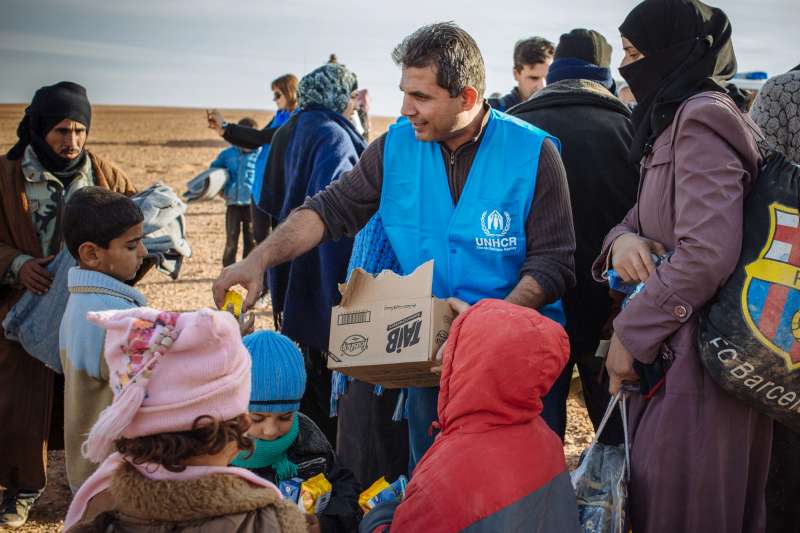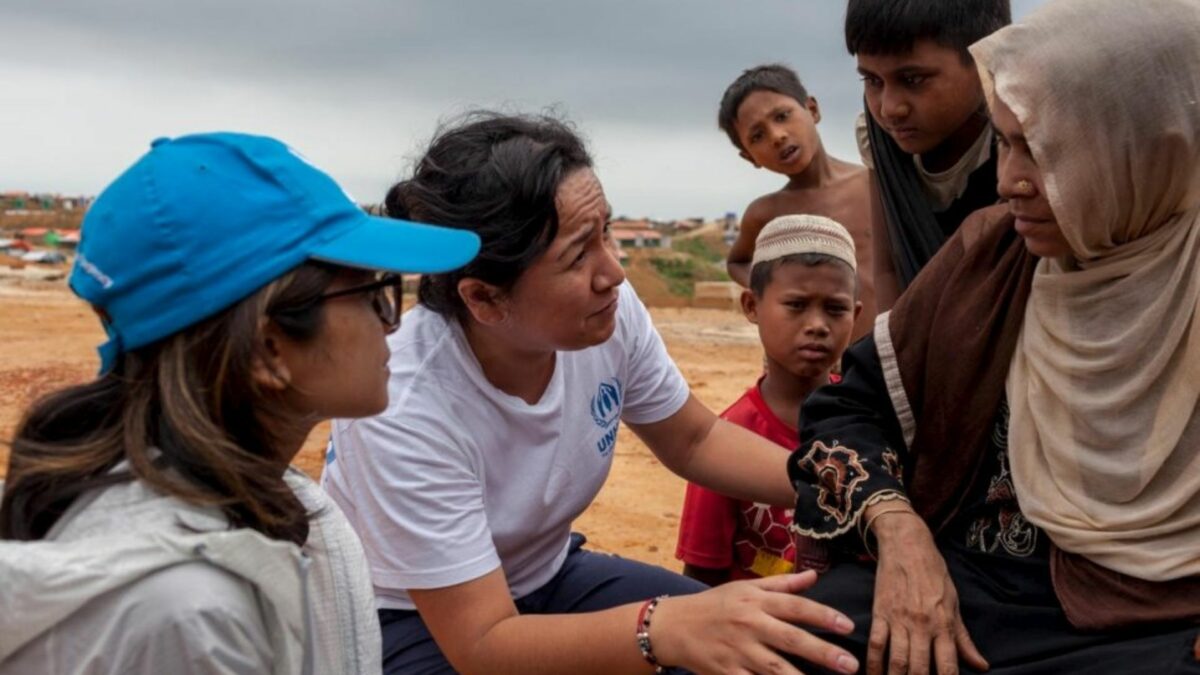Every day millions of people have to flee their homeland because of various miserable reasons. Some run away in fear of persecution while others are victims of war. Once you get to know the stories of these refugees, you would feel privileged and grateful for the life you incessantly complain about.
Anyway, if you get a chance to go on one such remarkable journey, what would be the things that you will carry? Well, we all know your smartphone would be on the top of that list. That being said, phones can be important for the process of both refugee and post-transit settlement. In that respect, it is not surprising that the use of mobile money among refugees is increasing, including financial support from government or non-governmental organizations.
In GSMA, there have been 271 mobile money operating systems in 93 countries by the end of 2015 and more than 400 million accounts that have been registered worldwide. Not just that, the Global Development Center believes that the large majority of help is provided to refugees in money. The majority of the help is supplied either by vouchers for special purchases or by in-kind contributions of things such as blankets, heaters, and rice sacks. There is increasing evidence that financial assistance transfers are not just higher than vouchers and kind support, in fact, mobile money is an optimum mode for cash transfers.
Humanitarian In-kind Assistance Aid for Refugees

Humanitarian aid focuses mostly on emergency response and recovery from emergencies. A significant number of individuals require help in various war and catastrophe scenarios during a short period. Displacement is frequent and, in particular, big camps for refugees or internally displaced individuals require rapid, easy trials and priority demands. Therefore, it is not unexpected that the term ‘vulnerable’ is susceptible to immediate or impending damage in the lexicon of humanitarian aid.
According to the Oxford University Humanitarian Innovation Project research “Refugee Economics: Rethought for Popular Assumptions,” the majority of refugees use mobile telephones widely, with greater internet usage rates than the normal population. In some situations, refugees even purchase a new SIM card when they reach a new nation to travel to reach the border. MNOs increasingly view migrants as a new, profitable client base and a chance to offer services to very vulnerable individuals.
Mobile money offers refugees more chances for financial inclusion. Where possible, the mobilized money of refugees and internally displaced populations remains the same as that used by other populations. For remittances, individual payments, merchant payments, loans, and savings.
International funds, either to send money home or to receive money from home are maybe the most important for refugees. Mobile funds have upset the international payments business in recent years, with average telephone transfers 21 percent cheaper than traditional money transfers. And these services are rapidly spreading. Indeed, the fastest increasing mobile money service is international transfers. It is now possible to transmit international mobile money transfers from over 20 nations throughout the world, notably between the adjacent countries, in regional marketplaces.
Challenges in Humanitarian Assistance Program

Refugees strive to swiftly create new lives, in settlement camps or post-settlement camps. They make use, not only for consumers but also as means of subsistence and company development. That too of person-to-person and commercial payments. According to the “Rethinking Popular Assumptions,” 89 percent of Kampala refugees use their mobile phones to earn cash. Phones can help migrants locate jobs, access markets, and establish micro-enterprises. A mobile cash ecosystem also offers chances for additional services, such as the sale of telephone charging services, the repair of mobile phones, and mobile money.
There are nonetheless some difficulties that prevent the expansion of humanitarian mobile aid for refugees. Also, the use of larger mobile money services. The supply and demand side might originate from these. The mobile money ecosystem in certain contexts is still too young and not sustainable. In others, demand is poor either because services are not comfortable or sturdy enough. It can also be because of a lack of knowledge or familiarity with the consumer. In their latest study, GSMA discovered the relevance of services and agent coverage. Along with agency liquidity, for refugees that use mobile money. Convenience and connectivity were greater than familiarity with the service.
Besides that, mobile phones sometimes turn out to be havoc for aid workers. Attacks on aid workers were detected as unrelated to the prevalent violence rates in a country. Rather, the rate of assault is directly linked to the presence of mobile communication, weak administration, and most notably the occurrence of armed conflict. Attacks usually include abduction or attempts to wound or murder workers using guns, physical attacks, or explosives.
Refugees International Aids by Firms
Trulioo, a firm that carries out ID checks, can utilize the online identity of a person for identification checks and access to credit. Along with other financial services. By leveraging user data and transaction history related to individual SIM cards, MNOs may function as centralized cross-border identification. Additionally, an online combination of an individual, including mobile money and online transactions. This serves as an opportunity to open financing doors in place of credit history.
However, frequently all this comes back to the first payment of relief. Which too often leads to business as usual by governments, NGOs, MNOs, and banks. Whilst it is necessary to acquire and coordinate these players. Many are uncomfortable, unexpressed, or skeptical of the advantages of cash transfers. While the vouchers or donations or of the merits of moving money.
The Bottom Line!
Digital financial aid channels, whether mobile or not, provide a range of advantages over traditional cash transfers. However, digital banking provides more openness and the capacity to trace funds. This in turn gives the opportunity to tackle the long-standing corruption problem that affects physical money handling. Digital provides more protection and safety to refugees from robbery.
Sadly, there is no time to leave before the present refugee crisis. Meanwhile, we congratulate everyone who helps millions of people with cash transfers, financial services, and other resources. It is one of the most blessed things you can do for two peas refugees.
Author Profile

- Jonas Taylor is a financial expert and experienced writer with a focus on finance news, accounting software, and related topics. He has a talent for explaining complex financial concepts in an accessible way and has published high-quality content in various publications. He is dedicated to delivering valuable information to readers, staying up-to-date with financial news and trends, and sharing his expertise with others.
Latest entries
 BlogOctober 30, 2023Exposing the Money Myth: Financing Real Estate Deals
BlogOctober 30, 2023Exposing the Money Myth: Financing Real Estate Deals BlogOctober 30, 2023Real Estate Success: Motivation
BlogOctober 30, 2023Real Estate Success: Motivation BlogOctober 28, 2023The Santa Claus Rally
BlogOctober 28, 2023The Santa Claus Rally BlogOctober 28, 2023Build Your Team – the Importance of Networking for Traders
BlogOctober 28, 2023Build Your Team – the Importance of Networking for Traders

